9 min read
What types of rooms are best suited for electric underfloor heating?
If you are researching the feasibility of electric underfloor heating for your home, you may see a lot of examples that simply talk about underfloor...
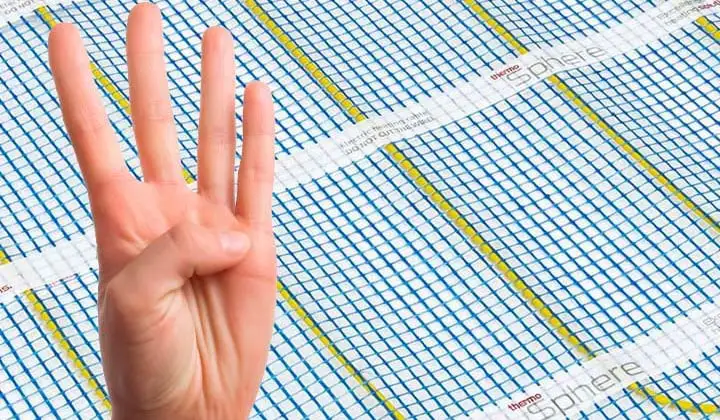
If you are looking into buying and installing electric underfloor heating in your home, it’s vital that you understand and get the right heat output. A slight error of judgement can cause the room to be either too cold or too warm, both of which would make you feel unnecessarily uncomfortable.
For complete piece of mind, a heat loss calculation is worth investing in. The results will accurately tell you how much heat you need for the room and as a result you can buy the right system, with the right output.
In this heating blog, we’ll walk you through the factors which will affect the output of the electric underfloor heating system.
Electric underfloor heating can be used with almost every type of floor finish. However, the floor
temperature that you set varies depending on the floor finish.
Maximum floor temperature: 29°C
29°C is the recommended maximum floor surface temperature according to European regulation. Floor tiles are a superb natural conductor of heat. The thickness of tiles doesn’t significantly impact heat output, but sometimes thicker tiles (up to 20mm) can increase the heat up time whilst the heat transfers through, but they will hold the heat for longer. Most internal floor tiles are approximately 10mm – 12mm thick which is perfect for electric underfloor heating.
If natural stone is more your thing, marble and slate stone floors are the best performing conductors of heat. Stone tile suppliers will be able to run you through which options are best for underfloor heating.
For more detail, read ‘The best electric underfloor heating for tile and stone floors’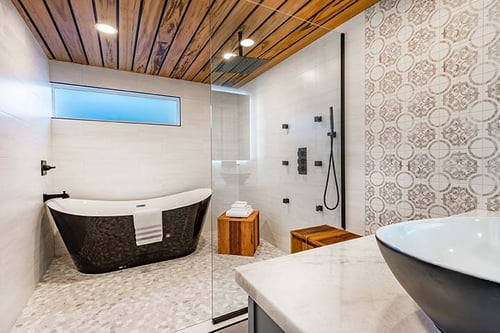
Maximum floor temperature: 27°C
27°C maximum floor surface temperature is recommended by most wood floor finish manufacturers, and bear in mind that the temperature will be more than that at the heating layer due to the insulative effect of wooden systems. There are two different types of wooden flooring you can use with electric underfloor heating systems these are traditional solid timber flooring or engineered wood flooring.
It’s recommended that a floor surface temperature of 27°C should not be exceeded. This is based on historic research which explored growth and shrinkage rates of timber floors and it was at 27°C when the expansion of the timber tested was deemed ‘invisible’ to the eye. It is also possible that temperatures that exceed this can cause the lacquer on the floor to discolour. This temperature is an industry-wide recommendation; however we recommend that you contact the flooring manufacturers because there will be some instances where the maximum temperature will vary.
For more detail, read ‘The best underfloor heating for wooden floors’
Maximum floor temperature: 27°C
Different types of vinyl will have different properties such as Karndean, Amtico, Tarkett and Click Vinyl. So, it’s important that you check the compatibility of the vinyl with the flooring manufacturer. This is important because if temperature thresholds are exceeded then the flooring could get damaged and discoloured. This is another reason we would recommend running a heat loss calculation because it will help ensure that you can heat the room effectively without overheating and potentially damaging the floor.
For more detail, read ‘Best Underfloor Heating for Vinyl’
Maximum floor temperature: 27°C
When it comes to carpet, tog rating is important. Most carpets have a tog rating of between 1.5 and 2. For electric underfloor heating the maximum tog rating to use is 2.5 because anything more will cause the underfloor heating system to not work as it should. Why? Because the carpet acts as an insulator which means the heating system must work harder to overcome that barrier. Just like other floor finishes, we recommend that you check with the manufacturer if the carpet is suitable for underfloor heating.
For more detail, read ‘Can you use electric underfloor heating under carpet?’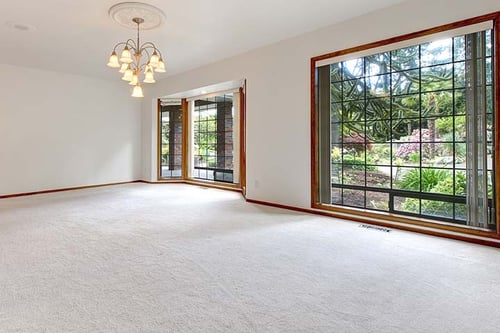
Insulation boards are key in making the heating output of your electric underfloor heating system as efficient as possible. It’s a false economy to not include insulation boards to reduce the cost of the system because the system will take up to 50% longer to reach the desired temperature and it will cost more to run. This is because when you install underfloor heating without insulation board, the heating cable will warm the layer below and the layer above at the same rate often causing 50% of the heat generated to be lost through the subfloor.
When it comes to floor size, the size of the heated area relative to the overall size of the room directly affects the heating output. This is especially relevant if the electric underfloor heating system is being used as a primary heat source and then it is recommended that your underfloor heating should be no less than 80% of the total floor area otherwise the system won’t warm the room effectively.
Underfloor heating thermostats use temperature readings from a floor (and/or) air sensor to know when the system should be on or off. Air temperature sensors are built into the thermostat and the floor temperature sensor is installed within the floor build-up during installation. Thermostats should generally be installed about 5 feet (1.2m) from the floor and away from windows, direct sunlight and other heat sources, as this will help to ensure the temperature readings represent the whole room accurately. Installing a thermostat and sensor probes in the wrong position can often lead to inaccurate readings which will cause either under or overheating of the room resulting in potential damage to the floor finish.
Typically, in a well-insulated room, you shouldn’t need to exceed a floor temperature of between 22-24°C. Turning up the thermostat to try and heat the room faster only results in the heating being on for a longer period, to reach the higher temperature and won’t necessarily heat the room any quicker.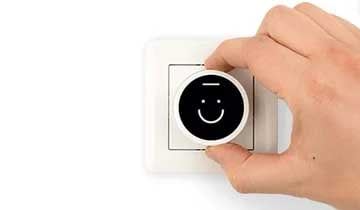
The last thing you want after installing a brand-new floor over your electric underfloor heating system is for the floor covering to get damaged caused by thermal blocking.
What do we mean by thermal blocking?
This is caused when airflow is restricted to the floor which blocks the heat from radiating from the floor to the room resulting in that patch of floor being damaged. Because the heating system is overheating in that area and exceeding the recommended floor temperature, it can cause damage to the floor finish. For example, if you have a wooden floor which has some slight discoloration in one area where a bean bag used to be, then this is a sign that thermal blocking has occurred.
Any flat-bottomed furniture or any rug with a tog rating of 2.5 and above should not be placed over a heated floor especially where the heating cable has been installed. If you have permanent furniture, then we would recommend using bun feet or similar. If you want a rug in the room, we advise looking at a hessian rug which has a low thermal resistance. Rugs such as felt-backed act as insulators and must be avoided as they can cause the floor to overheat.
If you have a question about anything covered in this heating blog or a more general question about ThermoSphere’s range of electric heating please contact one of the ThermoSphere team who will be happy to help.

9 min read
If you are researching the feasibility of electric underfloor heating for your home, you may see a lot of examples that simply talk about underfloor...
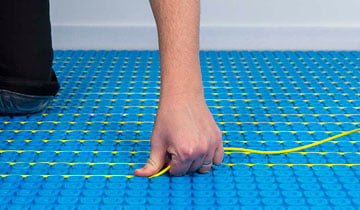
8 min read
If you are in the market for an electric underfloor heating system for your next home renovation, then you have landed in the perfect place. We’ve...
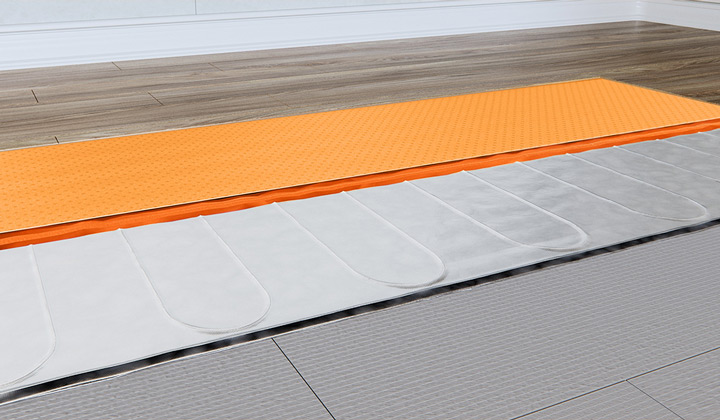
7 min read
Underfloor heating is well-known for warming cold tile and stone floors, but it can also make a wooden floor finish feel a million dollars. So, if...